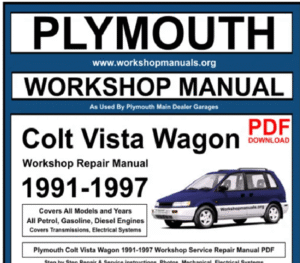Seasonal Car Shipping: When’s the Best Time to Transport Your Vehicle?

Just like airline tickets and hotel rates, the cost and convenience of shipping a car can change depending on the time of year. Seasonal car shipping plays a major role in pricing, availability, and delivery timelines—so understanding how the seasons affect auto transport can help you choose the best time to ship your vehicle and avoid common headaches.
Whether you’re relocating for work, shipping a newly purchased car, or sending a student vehicle to school, knowing when to book your transport can save you money and stress. Let’s take a closer look at how each season affects car shipping and when the ideal time might be for your specific situation.
Winter (December – February): Snowbird Season and Weather Woes
Winter is a mixed bag when it comes to car shipping. On one hand, it’s a very busy time for snowbird car shipping, especially routes from northern states like New York, Illinois, or Pennsylvania to warmer destinations like Florida, Texas, and Arizona. Thousands of retirees migrate south for the winter and want to bring their cars with them. Because of this demand, shipping to southern states during the winter tends to be more expensive and booked up faster.
On the other hand, shipping from southern to northern states during this time may be cheaper due to lower demand in that direction. But beware—winter weather can cause delays. Snowstorms, icy roads, and shorter daylight hours make travel more challenging for carriers, especially in northern or mountainous areas.
If you’re shipping in winter, try to schedule as far in advance as possible to secure a spot and avoid rush pricing. Also, consider the risk of weather-related delays and be flexible with your delivery window.
Spring (March – May): A Sweet Spot for Shipping
Spring is often considered one of the best seasons to ship a car. Demand typically decreases after the winter snowbird rush, and weather conditions start to improve across the country. Fewer delays, more carrier availability, and milder temperatures make spring a reliable time to schedule a shipment.
During this season, rates are often more reasonable, and there’s less competition for carrier space, especially in early spring. If you’re looking for a balance of affordability and good weather, spring might be your ideal window.
That said, as college students begin to move home or relocate for internships, the demand for car shipping can begin to rise again in late May. Planning ahead is key to locking in the best price.
Summer (June – August): Peak Moving Season
Summer is the busiest season for car shipping by far. Families relocate, college students move for school, and people take advantage of the warm weather to start fresh in new cities. As a result, demand for auto transport skyrockets—especially in June and July.
Because of the high demand, prices typically increase during summer. Carriers are in full swing and can fill up quickly, so it’s important to book several weeks in advance if you plan to ship during this time. Delays may also occur due to the sheer volume of shipments on the road.
Despite the cost, summer does offer some benefits. Longer daylight hours, dry roads, and fewer weather-related obstacles make travel safer and more predictable. If you’re shipping a car during summer and flexibility isn’t an issue, you might be able to snag a better deal by choosing a less common route or allowing for a wider pickup window.
Fall (September – November): Slowing Down with Savings
Fall is another strong contender for the best time to ship a car. After the summer surge dies down, demand decreases significantly, especially after Labor Day. Fewer moves, less competition, and generally good weather make fall a great time to schedule auto transport.
Rates tend to drop during this time, and carriers have more open spots. You’ll also avoid the holiday rush that can complicate shipping in late November and December. If you’re flexible and looking to save money, fall could be your golden opportunity.
One thing to watch for is the beginning of snowbird season. By late October and early November, prices may start creeping up again as retirees begin their annual migration to southern states. The earlier in the fall you book, the better the price and availability.
Holiday Periods: Book Early or Avoid Them
The end-of-year holiday season (Thanksgiving through New Year’s) adds another layer of complexity. Many auto transport companies reduce operations or close temporarily, and available drivers are limited. If you absolutely must ship during this time, expect higher prices and fewer available dates.
It’s not impossible to ship a car during the holidays, but it requires advance planning and flexibility. If possible, try to avoid scheduling around major holidays altogether, as it can complicate pickup and delivery timing.
Tips for Choosing the Best Time to Ship
If your schedule is flexible, spring and fall generally offer the best combination of price, availability, and weather conditions. But if you must ship in winter or summer, book early, be flexible, and work with a reputable company that can help you navigate potential delays.
Here are a few tips to keep in mind:
-
- Book early: Especially during peak seasons, booking weeks in advance gives you more options and better rates.
-
- Be flexible with timing: Giving your carrier a broader window for pickup and delivery can save you money.
-
- Plan around weather: Avoid shipping through high-risk weather zones during storms or extreme heat.
-
- Compare quotes: Get multiple quotes to ensure you’re getting a fair deal for the season.
Final Thoughts
There’s no one-size-fits-all answer to the best time to ship a car—it depends on your budget, timeline, and where you’re shipping to and from. But by understanding how each season affects pricing and logistics, you can plan more effectively and reduce the stress of shipping your vehicle.
Whether you’re shipping for a move, a sale, or a seasonal escape, knowing when to hit the road, or let a carrier do it for you, can make all the difference.







